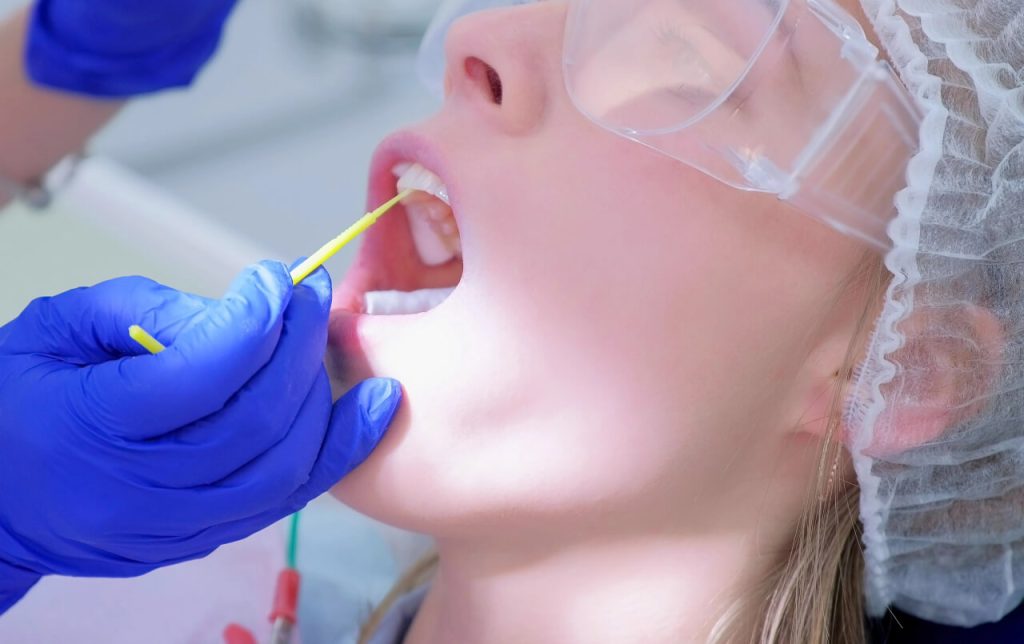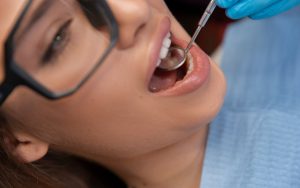Fluoride treatment is a cornerstone of modern dentistry, offering a simple yet powerful defense against tooth decay and enamel erosion. While most discussions focus on the procedure itself, few explore what happens after the treatment—specifically, how your dietary choices can influence its effectiveness.
Did you know that what you eat after fluoride treatment plays a significant role in maximizing its benefits? Beyond waiting to eat, understanding which foods support enamel health and which to avoid is key to long-term oral wellness. This blog will delve into the often-overlooked connection between diet and fluoride effectiveness, empowering you to make informed choices that protect your smile for years to come.
Understanding Fluoride Treatment and Its Aftercare
Fluoride treatment is more than a routine dental procedure, it’s a science-backed method for fortifying your teeth against decay. Fluoride, a naturally occurring mineral, integrates with your tooth enamel to form a stronger, decay-resistant surface. This treatment is especially beneficial for individuals at higher risk of cavities, including children and adults with weakened enamel or dry mouth conditions. However, what makes fluoride treatment unique is its ability to remineralize teeth, reversing early signs of decay in a way no other procedure can. While many associate fluoride with toothpaste, professional treatments involve concentrated solutions, offering significantly greater protection.
Why Post-Treatment Care Matters
Post-treatment care is the often-overlooked second half of fluoride’s effectiveness. While the application creates a protective shield, your immediate actions, particularly dietary choices, determine how well it adheres to your teeth and enhances your enamel. For instance, acidic or hard foods can strip away fluoride before it fully binds, undermining the treatment’s benefits. Conversely, enamel-friendly foods rich in calcium and phosphorus can amplify fluoride’s effects, encouraging remineralization. Few realize that habits like sipping acidic drinks or chewing sticky snacks shortly after fluoride treatment can counteract months of dental work. Understanding these nuances ensures you get the full value from your treatment, while also promoting a stronger, healthier smile.
Eating After Fluoride Treatment: General Guidelines
How Long to Wait to Eat After Fluoride Treatment
Timing is critical after a fluoride treatment to ensure the protective layer has time to set. Most dentists recommend waiting at least 30 minutes before eating or drinking. This waiting period allows the fluoride to penetrate and bond with your enamel, creating a stronger barrier against decay. For fluoride varnish, the timeframe might extend up to four hours, especially if sticky or abrasive foods are involved. Following these timing guidelines ensures maximum benefit from your treatment.
Foods to Eat After Fluoride Treatment
Choosing the right foods post-treatment can further strengthen your enamel and avoid interfering with fluoride’s effectiveness. Opt for soft, non-acidic options that are easy on your teeth and enhance remineralization. Examples include:
- Soft fruits: Bananas, avocados, and steamed apples.
- Dairy products: Yogurt, milk, and soft cheeses rich in calcium.
- Cooked vegetables: Mashed potatoes, steamed carrots, or squash.
- Protein sources: Eggs, tofu, or baked fish.
- Whole grains: Oatmeal, quinoa, or soft whole-grain bread.
What to Avoid After Fluoride Treatment
Certain foods and drinks can compromise fluoride’s adhesion or even strip it away prematurely. Avoid these items immediately after treatment:
- Acidic beverages like coffee, soda, and citrus juices.
- Sticky or sugary snacks like caramel and candies.
- Hard or crunchy foods such as chips, popcorn, or nuts.
- Alcoholic beverages, which can dry the mouth and weaken enamel.
By following these guidelines, you can enhance fluoride treatment’s effectiveness and protect your smile.
Post-Fluoride Treatment Diet Recommendations
Diet Restrictions After Fluoride Varnish
Fluoride varnish is designed to adhere to your teeth and release fluoride over time, but this process can be disrupted by certain foods and drinks. Avoid the following items for at least 4-6 hours after treatment:
- Hot foods or beverages: Heat can soften the varnish and reduce its effectiveness.
- Crunchy foods: Chips, pretzels, or raw vegetables can scrape the varnish off your teeth.
- Sticky snacks: Gummy candies or caramel may pull the fluoride coating away.
- Highly acidic foods: Citrus fruits, tomatoes, and vinegar-based dishes can erode the varnish prematurely.
Best Foods Post Fluoride Dental Treatment
While there are foods to avoid, there are also many that actively support your oral health and enhance fluoride’s effects. These are gentle on your teeth and rich in nutrients that promote remineralization:
- Calcium-rich options: Low-fat dairy products like cheese, milk, or yogurt to strengthen enamel.
- Phosphorus-rich foods: Eggs, fish, and lean meats help repair damaged enamel.
- Soft fruits: Bananas, melons, or baked apples offer natural sweetness without being abrasive.
- Hydrating vegetables: Steamed spinach, cucumbers, or zucchini are easy to eat and maintain oral moisture.
- Whole grains: Soft oatmeal or quinoa, providing nutrients without being harsh on teeth.
By tailoring your diet post-treatment, you can create a supportive environment for fluoride to work effectively while fostering stronger, healthier teeth.
Why Proper Aftercare Supports Long-Term Oral Health
Fluoride as the Foundation for Stronger Teeth
Fluoride treatment is a proactive step in protecting your teeth from decay, but its true potential lies in how well you maintain aftercare practices. By giving fluoride enough time to adhere to and strengthen your enamel, you create a barrier that shields your teeth against acids, bacteria, and daily wear. Neglecting post-treatment care—such as consuming abrasive or acidic foods too soon—can weaken this barrier, leaving your teeth vulnerable.
How Diet Influences Fluoride Effectiveness
Few patients realize the intricate relationship between diet and fluoride’s long-term benefits. Enamel-friendly foods, such as those rich in calcium and phosphorus, actively support remineralization, working in tandem with fluoride to rebuild weakened tooth structures. On the other hand, poor dietary choices, like sugary snacks or acidic drinks, can reverse the protective effects of fluoride by encouraging bacterial growth and enamel erosion. Consistently making the right dietary choices amplifies the lasting impact of fluoride treatments.
Beyond Diet: Habits That Maximize Results
While diet plays a crucial role, daily oral hygiene and regular dental checkups are equally important. Brushing with fluoride toothpaste, flossing, and avoiding habits like grinding teeth or frequent snacking on sugary foods help maintain the enamel-strengthening effects of fluoride treatment. Proper aftercare transforms fluoride treatments from a temporary solution into a cornerstone for a lifetime of healthier, stronger teeth.
Frequently Asked Questions (FAQs)
Can I Eat After Fluoride Treatment?
This is one of the most common concerns patients have after receiving fluoride treatment. The answer depends on the type of treatment administered. For fluoride varnish, it’s recommended to wait at least 4-6 hours before consuming certain foods or drinks, especially those that are crunchy, sticky, or acidic. If fluoride gel or foam was used, you may only need to wait 30 minutes. The key is allowing the fluoride sufficient time to bond with your enamel. By following your dentist’s specific guidelines, you ensure the treatment remains effective.
What Should I Drink After Fluoride Treatment?
Hydration is important, but not all beverages are created equal when it comes to post-treatment care. Water is the best choice, as it won’t interfere with fluoride’s adhesion or efficacy. Avoid sugary drinks, sodas, and citrus juices immediately after treatment, as they can erode enamel or disrupt fluoride bonding. Warm (not hot) herbal teas without sugar are also a gentle option for hydration.
Why Are There Dietary Restrictions After Fluoride Treatment?
Dietary restrictions might seem inconvenient, but they play a vital role in the treatment’s success. Abrasive, acidic, or sticky foods can either physically remove fluoride or counteract its benefits by promoting acidity in the mouth. These restrictions are a short-term measure designed to ensure you receive the maximum protection against cavities and enamel erosion. Following them enhances both the immediate and long-term benefits of the treatment.
Conclusion
Fluoride treatment is more than just a dental procedure—it’s an investment in your long-term oral health. By understanding what to eat and avoid after your treatment, you can maximize its benefits and protect your teeth from decay. Whether it’s choosing soft, nutrient-rich foods or steering clear of sticky and acidic items, these small steps make a significant difference in strengthening your enamel and maintaining a healthy smile. Additionally, following proper aftercare ensures that your fluoride treatment works effectively, setting the stage for healthier teeth and fewer dental issues down the road.
At High Desert Dental, we’re committed to helping you achieve and maintain excellent oral health. If you have questions about fluoride treatments, dietary recommendations, or any other dental concerns, our team is here to guide you. Call us today at 505-888-2606 or visit us to schedule your appointment. Let’s work together to ensure your smile stays healthy and radiant for years to come!





